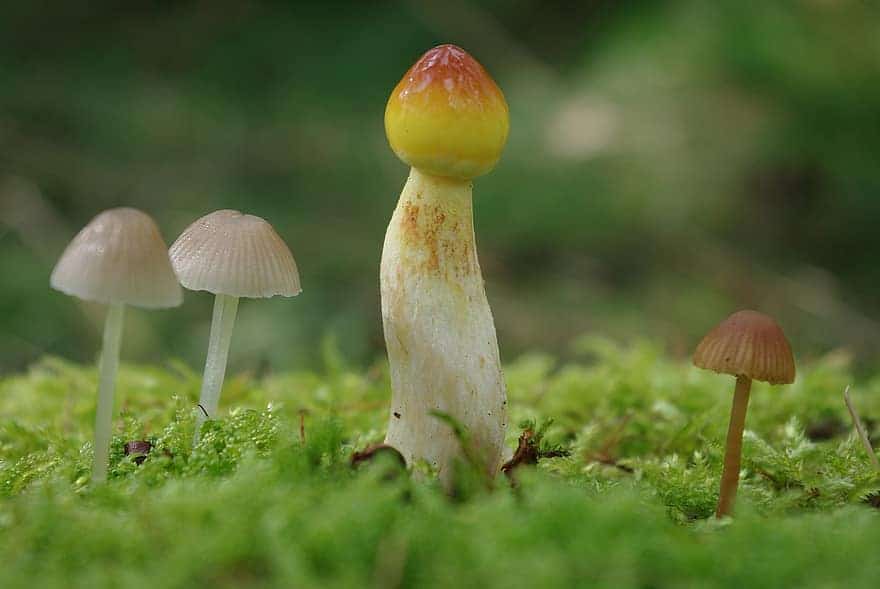
After decades of being banned from research by law enforcement agencies across the world, psilocybin — the psychoactive ingredient in so-called ‘magic mushrooms’ — has made a resurgence as scientists increasingly report on its potential benefits. The drug may have important therapeutic value against depression, anxiety, addiction, obsessive-compulsive disorders, or even migraines, sometimes improving symptoms when nothing else seems to work.
Like MDMA and LSD, two other Schedule 1 drugs that have been shown to have medical value, psilocybin could become a useful and common treatment in a psychiatric setting in the not so distant future. Anticipating this demand, scientists at the Technical University of Denmark have sought out to find alternative ways to produce psilocybin.
Most strains of magic mushrooms produce around 10 mg of psilocybin per gram of dried mushroom, with the effective dose sitting between 6 and 20 mg. The problem is that isolating the psilocybin molecule can be expensive.
Previously, researchers affiliated with academic groups or biotech companies managed to either synthesize psilocybin or produced it with genetically modified E. coli bacteria. However, both methods involved using 4-hydroxyindole, an expensive chemical feedstock that costs around $225 per gram.
The researchers in Denmark also employed a biotech approach to producing psilocybin but used baker’s yeast, Saccharomyces cerevisiae, rather than bacteria.
The yeast expresses a key enzyme involved in the same magic mushroom production pathway of psilocybin, which doesn’t involve the need for expensive chemicals.
Experiments suggest that the yeast can yield 627 mg/L of psilocybin and 580 mg/L of psilocin. Psilocin is the byproduct of the chemical breakdown of psilocybin in the human gut. It is psilocin, a molecule very structurally similar to serotonin, that binds with key receptors in the brain to produce the familiar hallucinogenic effects of mushroom ingestion.
It is possible that the bioreactor employed by the study is too similar to conditions found in the human gut, which is why the yield was almost half-half psilocybin-psilocin. But this isn’t necessarily problematic. As mentioned, psilocin is the chemical compound that is responsible for the magic mushroom high. Even so, the researchers will have to weigh the benefits and downsides of producing both psilocybin and psilocin.
That’s not all. During their production of psilocybin and psilocin through synthetic biology, the yeast also produced intermediate products — molecules one or more steps away from the final product of interest — such as aeruginascin and N-acetyl-4-hydroxytryptamine. Both have been associated with positive effects in treating depression, as well as anti-microbial and sedative effects.
“Although its notoriety originates from its psychotropic properties and popular use as a recreational drug, clinical trials have recently recognized psilocybin as a promising candidate for the treatment of various psychological and neurological afflictions,” the authors wrote in their study.
“These results lay the foundation for the biotechnological production of psilocybin in a controlled environment for pharmaceutical applications, and provide a starting point for the biosynthetic production of other tryptamine derivatives of therapeutic relevance.”
The findings were reported in the journal Metabolic Engineering.


